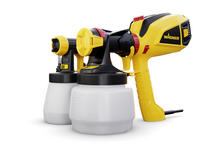Sewing a dishcloth and decorating with stencils
Here we show you how to make beautiful Christmas dishcloths from fabric, textile paint and stencils made specifically for this purpose. The trick here – we use ordinary household items, such as wooden spoons or cookie cutters, to make the stencils. Decorated with a little bit of lace and beautifully packaged, you can conjure up perfect Christmas gift for friends or family.






